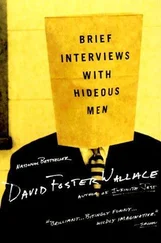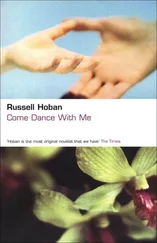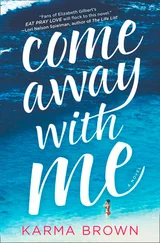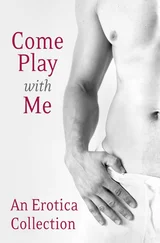Scott MacDonald - A Critical Cinema 2 - Interviews with Independent Filmmakers
Здесь есть возможность читать онлайн «Scott MacDonald - A Critical Cinema 2 - Interviews with Independent Filmmakers» весь текст электронной книги совершенно бесплатно (целиком полную версию без сокращений). В некоторых случаях можно слушать аудио, скачать через торрент в формате fb2 и присутствует краткое содержание. Год выпуска: 1992, ISBN: 1992, Издательство: University of California Press, Жанр: Прочая документальная литература, на английском языке. Описание произведения, (предисловие) а так же отзывы посетителей доступны на портале библиотеки ЛибКат.
- Название:A Critical Cinema 2: Interviews with Independent Filmmakers
- Автор:
- Издательство:University of California Press
- Жанр:
- Год:1992
- ISBN:9780585335100
- Рейтинг книги:3 / 5. Голосов: 1
-
Избранное:Добавить в избранное
- Отзывы:
-
Ваша оценка:
- 60
- 1
- 2
- 3
- 4
- 5
A Critical Cinema 2: Interviews with Independent Filmmakers: краткое содержание, описание и аннотация
Предлагаем к чтению аннотацию, описание, краткое содержание или предисловие (зависит от того, что написал сам автор книги «A Critical Cinema 2: Interviews with Independent Filmmakers»). Если вы не нашли необходимую информацию о книге — напишите в комментариях, мы постараемся отыскать её.
A Critical Cinema 2: Interviews with Independent Filmmakers — читать онлайн бесплатно полную книгу (весь текст) целиком
Ниже представлен текст книги, разбитый по страницам. Система сохранения места последней прочитанной страницы, позволяет с удобством читать онлайн бесплатно книгу «A Critical Cinema 2: Interviews with Independent Filmmakers», без необходимости каждый раз заново искать на чём Вы остановились. Поставьте закладку, и сможете в любой момент перейти на страницу, на которой закончили чтение.
Интервал:
Закладка:
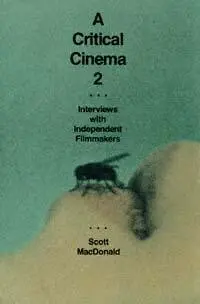
title
:
A Critical Cinema : Interviews With Independent Filmmakers
author
:
MacDonald, Scott.
publisher
:
University of California Press
isbn10 | asin
:
0520079183
print isbn13
:
9780520079182
ebook isbn13
:
9780585335100
language
:
English
subject
Experimental films--United States--History and criticism, Independent filmmakers--United States--Interviews.
publication date
:
1992
lcc
:
PN1995.9.E96M34 1992eb
ddc
:
791.43/75/0973
subject
:
Experimental films--United States--History and criticism, Independent filmmakers--United States--Interviews.
Page iii
A Critical Cinema 2
Interviews with Independent Filmmakers
Scott MacDonald

Page iv
University of California Press
Berkeley and Los Angeles, California
University of California Press
Oxford, England
Copyright © 1992 by The Regents of the University of California
Library of Congress Cataloging-in-Publication Data
MacDonald, Scott, 1942
A critical cinema.
Includes bibliographical references and index.
Filmography: p. 423-435.
1. Experimental filmsUnited StatesHistory and
criticism. 2. Motion picture producers and directors
United StatesInterviews. I. Title.
PN1995.9.E96M34 1988 791.43'75'0973 87-6004
ISBN 0-520-05800-3 (v. 1: cloth)
ISBN 0-520-05801-1 (v. 1: pbk.)
ISBN 0-520-07917-5 (v. 2: cloth)
ISBN 0-520-07918-3 (v. 2: pbk.)
Printed in the United States of America
1 2 3 4 5 6 7 8 9
The paper used in this publication meets the minimum requirements of American National Standard for Information SciencesPermanence of Paper for Printed Library Materials, ANSI Z39.481984

Page v
To my best teachers:
Patricia O'Connor, Peter Watkins,
J. J. Murphy, Bob Huot, Morgan Fisher,
Frank Bergmann, Su Friedrich, Ian MacDonald
Page vii
Contents
Acknowledgments
ix
Introduction
1
Robert Breer
15
Michael Snow
51
Jonas Mekas
77
Bruce Baillie
109
Yoko Ono
139
Anthony McCall
157
Andrew Noren
175
Anne Robertson
206
James Benning
220
Lizzie Borden
249
Ross McElwee
265
Su Friedrich
283
Page viii
Anne Severson (On Near the Big Chakra)
319
Laura Mulvey (On Riddles of the Sphinx)
333
Yvonne Rainer (On Privilege)
344
Trinh T. Minh-ha
355
Godfrey Reggio
378
Peter Watkins
402
Filmography
423
Bibliography
437
Index
449
Page ix
Acknowledgments
Thanks to the following journals for permission to reprint interviews and, in some cases, my introductory comments:
Film Quarterly,
for "Southern Exposure: An Interview with Ross McElwee," vol. 41, no. 4 (Summer 1988), pp. 1323; "Yoko Ono: Ideas on Film (Interview/Scripts)," vol. 43, no. 1 (Fall 1989), pp. 223; ''Illuminations: An Interview with Andrew Noren," vol. 44, no. 3 (Spring 1991), pp. 3043; "Demystifying the Female BodyTwo Interviews: Anne Severson
Near the Big Chakra
/Yvonne Rainer
Privilege,
" vol. 45, no. 1 (Fall 1991), pp. 1832.
Afterimage,
for "Interview with James Benning," vol. 9, no. 5 (December 1981), pp. 1219; "Interview with Anthony McCall," vol. 15, no. 5 (December 1987), pp. 69; "Damned If You Don't: An Interview with Su Friedrich," vol. 15, no. 10 (May 1988), pp. 610.
The Independent,
for "The Nuclear War Film: Peter Watkins Interviewed," vol. 7, no. 9 (October 1984), pp. 2224, 32; "Daddy Dearest: Su Friedrich Talks about Filmmaking, Family, Feminism," vol. 13, no. 10 (December 1990), pp. 2834.
Cinematograph,
for "A Picture a Day Keeps the Doctor Away: An Interview with Anne Robertson," vol. 4 (1991), pp. 5366.
Feminist Studies,
for "Interview with Lizzie Borden." Article reprinted from
Feminist Studies,
vol. 15, no. 2 (Summer 1989), pp. 327345, by permission of the publisher, Feminist Studies, Inc., c/o Women's Studies Program, University of Maryland, College Park, MD, 20742.
Journal of Film and Video (Journal of the University Film Associa
-
Page x
tion
), for "Interview with Peter Watkins," vol. 34, no. 3 (Summer 1982), pp. 4755.
October,
for "Interview with Jonas Mekas," no. 29 (Summer 1984), pp. 82116.
The Velvet Light Trap,
for "But First a Little Ru Ru: An Interview with Robert BreerRecent Films," no. 24 (Fall 1989), pp. 7584.
The Velvet Light Trap
is published by the University of Texas Press.
Thanks to Utica College of Syracuse University for several research grants, and to my typist Carol Fobes.
Page 1
Introduction
Since nearly all of us are acculturated to expect certain types of experiences in movie theaters and on television, one of the valuable functions of the multifaceted independent cinema that has developed alongside the popular cinema during most of its history is to challenge our expectations. When we see a film that surprises or shocks us, we are forced to question the implicit assumptions about cinema our expectations encode. Of course, this process is inevitable within any area of film history. Even in the standard genres of commercial film, viewers are inevitably comparing each new instance of horror film, Western, and suspense thriller with previous instances and with the sense of the genre's history they have developed. What gives some forms, and some particular instances, of independent film their "critical" edge is the
extent
to which they force us to question our psychological/social/political investment in the conventional. A new instance of a horror film usually confronts, at most, a limited number of the expectations we bring to the genrethe way in which characters are developed or plots resolved, or the type of special effects used, or the overall look of the events dramatizedbut an independent film with a powerful critical edge might challenge our assumption that a film must include characters and plot or must present events within images that confirm Western perspectival conventions or must include recognizable imagery at all. Indeed, one of the signals that one is experiencing a powerfully critical film is the conviction that what we're seeing isn't a
real
movie, even though it is obviously being projected by a movie projector in a movie theater.
A particular critical film can relate to the conventional cinema in
Page 2
various ways. My distinctions in Volume 1 were determined by the degree to which a particular film, or the work of a particular filmmaker, invokes the conventions in order to challenge them. In some instances, filmmakers use just enough of the elements employed in conventional movies to create an aura of the conventional, but use these elements in a consistently challenging way. George Kuchar's films often reveal characters enacting melodramatic plots, but his articulation of conventional elementsthe acting, the costumes and sets, the continuity, the characters' motivationsis so unlike big-budget Hollywood films that for most viewers Kuchar's films are as much about the disparity between the two levels of film practice as about the issues he pretends to explore. Not only do we realize the limits of Kuchar's economic means and see the effects of these limitations in his filmswe are also reminded that the very extensiveness of the resources available to Hollywood directors constricts what big-budget directors can express and how they can express it.
Читать дальшеИнтервал:
Закладка:
Похожие книги на «A Critical Cinema 2: Interviews with Independent Filmmakers»
Представляем Вашему вниманию похожие книги на «A Critical Cinema 2: Interviews with Independent Filmmakers» списком для выбора. Мы отобрали схожую по названию и смыслу литературу в надежде предоставить читателям больше вариантов отыскать новые, интересные, ещё непрочитанные произведения.
Обсуждение, отзывы о книге «A Critical Cinema 2: Interviews with Independent Filmmakers» и просто собственные мнения читателей. Оставьте ваши комментарии, напишите, что Вы думаете о произведении, его смысле или главных героях. Укажите что конкретно понравилось, а что нет, и почему Вы так считаете.

